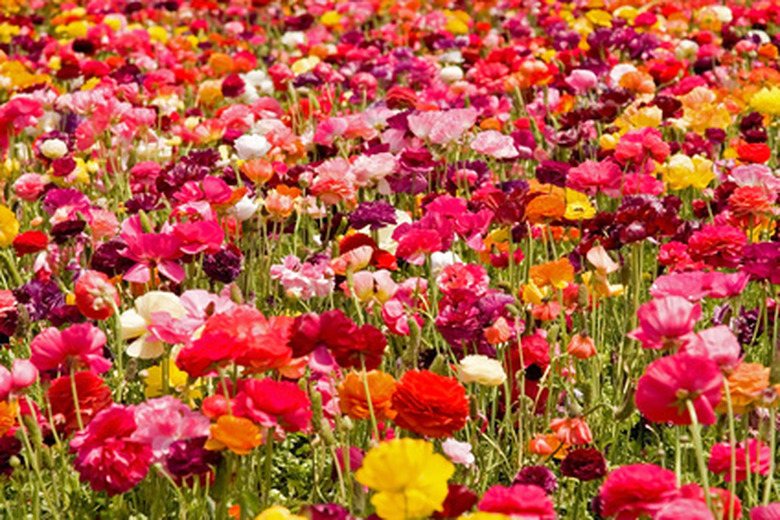Ranunculus Pests & Diseases
Ranunculus, likely more familiar as buttercups, are known for producing a profusion of bright yellow flowers. However, the buttercup family also includes a number of showier blooms in a range of colors that may be used indoors as well as for brightening up outdoor gardens. While ranunculus is a fairly hardy plant that spreads well and tolerates a variety of conditions, it can fall prey to common pests and diseases. The best way to protect your ranunculus is to be aware of the signs and symptoms of ranunculus pests and diseases so you can keep your flowers healthy.
Aphids
Aphids are small, green insects that infest a variety of flowers, including ranunculus, and feed on the sap in their stems. If you look closely, you can see these small, oval insects crawling on infested plants, and you will also notice that your plants may look worn and faded with discolored leaves and wilted edges if the infestation continues unchecked. Aphids can be deterred and removed by spraying ranunculus with a mixture of mild dish soap and water or with essential oils, both of which interfere with aphids' ability to feed on the plants and make the plants themselves taste bad to the insects.
- Ranunculus, likely more familiar as buttercups, are known for producing a profusion of bright yellow flowers.
- Aphids can be deterred and removed by spraying ranunculus with a mixture of mild dish soap and water or with essential oils, both of which interfere with aphids' ability to feed on the plants and make the plants themselves taste bad to the insects.
Birds
Young ranunculus shoots make a tender, tasty treat for birds. If you are growing your ranunculus from seed outside, then you will need to cover the area with wire or netting until the shoots reach about 6 inches in height to keep the birds away. Once the plants are about 6 inches tall, they no longer attract avian predators and can be uncovered so that everyone can enjoy the eventual bright blooms.
Powdery Mildew
Powdery mildew is a gray, black, white or pinkish powder that looks as if someone dusted really dirty erasers over your plants. It can be controlled simply by removing affected parts of the plant using sterile pruning techniques (disinfecting pruners between plants) and making sure that your ranunculus plants get adequate sun and air circulation.
Water the plants using a drip hose to avoid creating a humid environment on and around the plants, and do so early in the morning so that the water does not sit on the leaves. There are sprays for powdery mildew, but generally you can control mildew simply by removing the infected portions of the plant and adjusting watering habits.
- Young ranunculus shoots make a tender, tasty treat for birds.
- If you are growing your ranunculus from seed outside, then you will need to cover the area with wire or netting until the shoots reach about 6 inches in height to keep the birds away.
